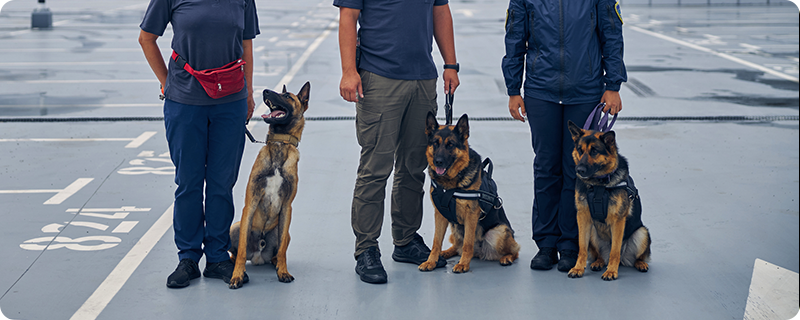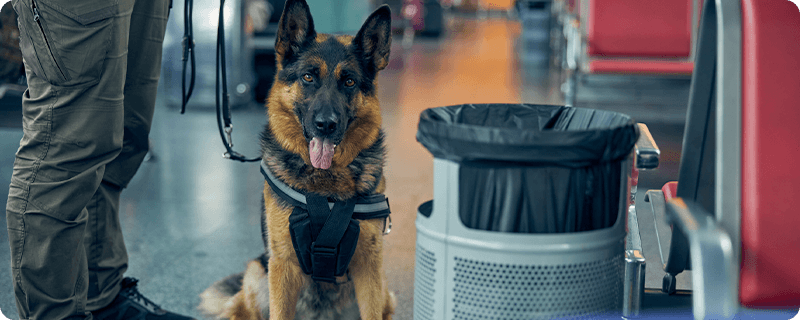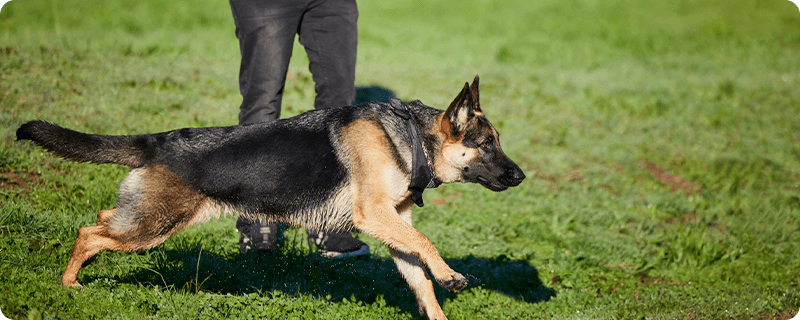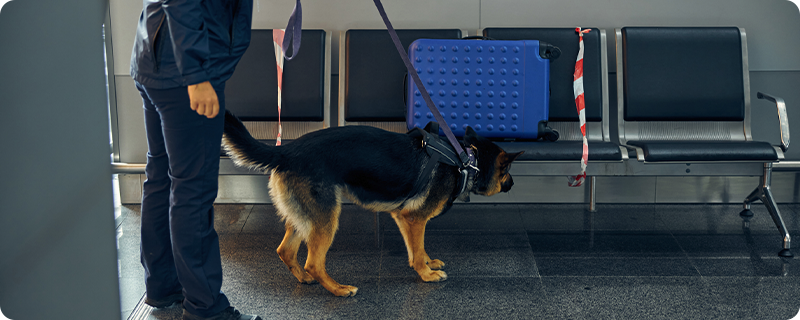Canine Security: Is It Right for Your Hospital?

Hospital workers experience the highest rate of workplace violence in the United States, according to the U.S. Occupational Safety and Health Administration (OSHA). K9 security is a real world solution to reducing this reality.
Canine Security: Is it right for your hospital?
When I talk about having security canines at hospitals, people always look shocked. After my talk, they approach me and ask, “What is the purpose of security canines at hospitals? Hospitals are safe.”
My response is, “Really?”
News flash . . .
Hospital workers experience the highest rate of workplace violence in the United States, according to the U.S. Occupational Safety and Health Administration (OSHA). According to OSHA’s Workplace Violence in Healthcare report, “From 2002 to 2013, incidents of serious workplace violence (those requiring days off for the injured worker to recuperate) were four times more common in healthcare than in private industry on average.” And OSHA’s website indicates that “[i]n 2011, U.S. hospitals recorded 253,700 work-related injuries and illnesses, a rate of 6.8 work-related injuries and illnesses for every 100 full-time employees. This is almost twice the rate for private industry as a whole.”
The secret—why canines are so effective
From the National Center for Biotechnology Information website, canines have effectively reduced crime and violence by 75 percent to 80 percent in Midwest and East Coast hospitals. And from the K9Fleck.org website, “a second study in Yarmouth, MA showed a dramatic 80% decrease in commercial break-ins following the first year of a canine unit being on patrol and aggressively addressing the issue of the break-ins. The same website also indicates “. . . typical response times from the State Police (especially during off hours) can be upwards of 30 – 45 minutes. With an in house K9 unit that response time can be greatly reduced or even eliminated if the K9 team is on duty when deployment is warranted.” I am an avid proponent of this type of security because dogs act as a physical deterrent to potential criminals.
The Security Industry Association article “Mitigating the Risk of Workplace Violence in Health Care Settings” indicates that “Emergency departments are a particularly high-risk area, with an April 2016 article in the New England Journal of Medicine reporting that about 80 percent of ED physicians and nurses had been assaulted during the prior year.” Canines are a physical deterrent as much as they are a psychological deterrent to would-be criminals and erratic patients.
Here’s the secret to why canines are so effective . The intruder becomes the prey (instead of the staff or patients becoming the prey). Canines at a Baltimore hospital
A recent article I read about canines at Mercy Hospital in Baltimore proves why canines are so effective. Mark Ross, captain of Mercy’s K-9 Unit, said, “Our director goes to downtown meetings in Baltimore [with other hospital administrators] and they share crime statistics” . “It’s well-known within the city that Mercy has dogs and it’s not a place to go for crime.”
Nurse Janet Norman says, “There is an added sense of protection here” . “We had a disturbance once and a family had become so angry. I’m not sure it was directed at us, but it was very frightening. Security came up with the dog and everyone quieted down. There was no feeling that there would be any harm to anyone.”
Canines can also reduce risks and security issues in parking lots. “It gives us peace of mind,” said Donna Disney, RN, BSN, CEN, Mercy’s clinical director for the ED. “It’s interesting the effect when you have a really busy waiting room. The dogs have a tendency to calm everybody down. It’s a distraction as much as anything, (to) watch the dog for a minute. We joke and call them our favorite security officers.”
Canines and the story of two gangs
HCPro reported an interesting story that took place in Southern California. Two opposing gangs came into the lobby of a hospital; both gangs were upset and started fighting each other. The gangs started hollering at each other in the lobby area, which prompted calling the canine security team.
The dispatcher of the hospital called the canine security team. Within thirty seconds, “you could hear a pin drop.” This is an example of how canine security can reduce (or eliminate) a potentially violent situation when a canine is presented to aggressive or noncompliant individuals.
Canines for hospitals have a special temperament
The dogs used for hospital security come from Eastern Europe, including Czech Republic and Slovakia. Most are German shepherds, but some are Belgian Malinois. These dogs have a special temperament in dealing with the public 24 hours a day.
The dogs we use have been tested in all capacities and have nerves of steel. They can be trusted with children and are never bullying or dominant. They have nothing to prove because they know they can handle any security situation that should arise. The dogs from this area have a solid nerve threshold, and you can rely on them to keep you safe. One out of every ten dogs will pass the test needed to work in hospitals. They have to be able to be petted by sick children or elderly patients and not react aggressively but must also be ready to go into a defensive mode when the situation warrants.
These are not your typical police dogs, which are trained to be aggressive.
Is canine security right for your hospital? 5 key questions to ask Whenever I meet with hospital administrators who are thinking about this concept, I ask these five key questions to determine whether a canine team is right for their hospital:
- How many ER issues do you have a month?
- How many parking lot issues do you have a month?
- What type of security do you have now? (Do you have armed guards?)
- Do you have a lot of security issues? (We can reduce that with an added canine security team layer.)
- How many guards are on your payroll? (We can save you money because one dog equals the effectiveness of five guards.)
Should we look at alternative, nonlethal ways to prevent crime? Or are guns the only preventive measure? As a security consultant for the past 15 years, I can tell you with certainty . . . there is a better way. I’ll leave you with this thought: I tell people I can call back a dog, but I can’t stop a bullet.
Next step
Mark Bosque is a security consultant and owner of K9 X-Factor. His company can reduce hospital and school security concerns with canine security teams. K9 X-Factor partners with hospitals and schools seeking an alternative approach to protecting their employees while reducing expensive liability issues related to having armed security guards. K9 X-Factor is unique because your hospital or school gets “friendly first” dogs without sacrificing patients’, students’ and employees’ safety. Other canine security companies use dogs that are rewarded to go after a threat. While that can be useful in dangerous situations, those dogs lack the social temperament to be people-friendly.
K9 X-Factor dogs are friendly with all people—including children and seniors—and are trained to address threats instantly. Whether you want to buy a canine or lease a security canine team from K9 X-Factor, message me to see if a canine security team is right for you.







